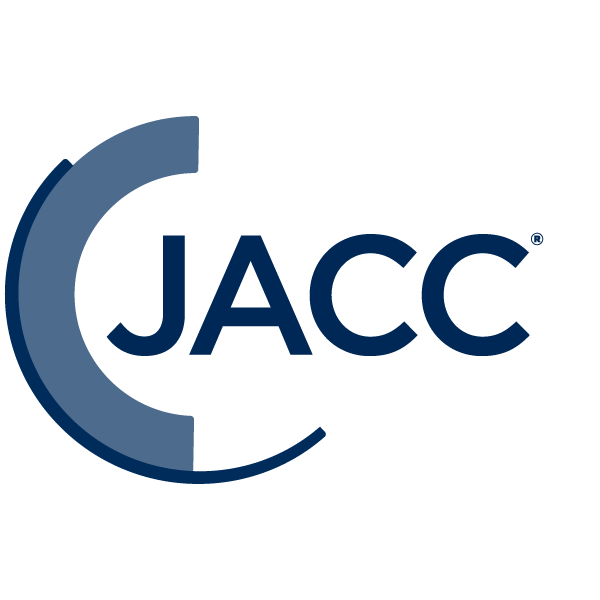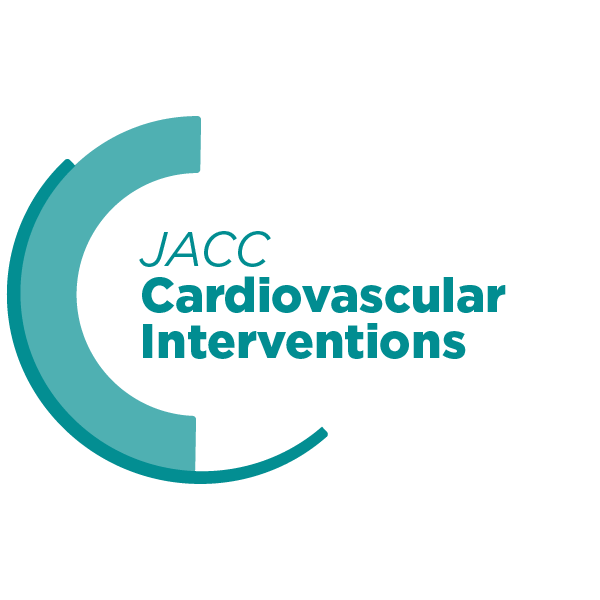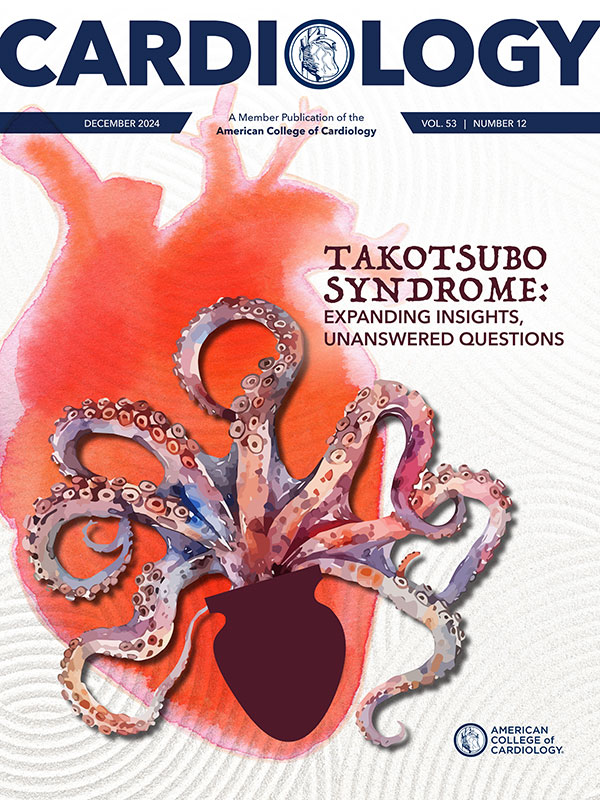JACC in a Flash | JACC Journals at TCT 2024; TAVR UNLOAD; More
Click here for an overview of the trial results and related editorial comments, as well as findings from the PASTE Registry, and download the infographics.
Click here for all the studies simultaneously published in JACC Journals during TCT 2024, along with article illustrations, trial infographics, author interviews, and Journal Club materials.
Top science from this year's TCT Scientific Sessions was simultaneously published across JACC Journals, with 19 new research papers and nine editorial comments covering some of the hottest trials like TRILUMINATE, TRISCEND II and FLASH, new and emerging technologies for treating patients with cardiovascular diseases, fractional flow reserve (FFR) and resting full-cycle ratio (RFR) for predicting myocardial ischemia, IVUS-guided PCI in patients with diabetes and acute coronary syndrome (ACS), left atrial appendage occlusion (LAAO) outcomes from the NCDR LAAO Registry, and more.
Highlights include:

In JACC, two devices approved by the U.S. Food and Drug Administration (FDA) this year for tricuspid regurgitation (TR) are safe, effective and improve quality of life (QOL) at one year, based on findings from the TRILUMINATE Pivotal and TRISCEND II trials.
The EVOQUE transcatheter tricuspid valve replacement (TTVR) system was approved in February 2024 based on results from the TRISCEND II trial presented at TCT 2023, and the TriClip device for tricuspid transcatheter edge-to-edge repair (T-TEER) was approved in April 2024 based on primary results from TRILUMINATE Pivotal that were presented at ACC.23. The new study results in JACC show sustained symptom relief through one year of follow-up after device therapy.
"The studies further support the longer-term benefit of these devices for the treatment of selected patients with tricuspid regurgitation, demonstrating meaningful and sustained improvements in patients' quality of life," said JACC Editor-in-Chief Harlan M. Krumholz, MD, SM, FACC. "The key next step will be to identify the individuals who stand to benefit the most and to develop strategies that support patients in making decisions aligned with their personal health goals."

In JACC: Cardiovascular Interventions, results from the FLASH trial demonstrated the noninferiority of artificial intelligence (AI)-based fully automated quantitative coronary angiography (AI-QCA)-assisted PCI compared with optical coherence tomography (OCT)-guided PCI in achieving optimal minimal stent area, with comparable procedural complications, OCT-defined endpoints, and six-month clinical outcomes. (See ACC.org/TCT2024 for a summary.)
In a study out of China, Italy, Pakistan and the UK, Xiaofei Gao, MD, et al., found IVUS-guided PCI improved clinical outcomes at one year in high-risk patients with diabetes and ACS. In a related editorial comment, Joo-Yong Hahn, MD, PhD, notes that the "results provide additional data supporting the advantages of IVUS" in patients with diabetes. However, he writes that "caution is needed in applying these study results to daily practice because of the inherent limitations of subgroup analysis. The mere use of intravascular imaging does not necessarily lead to improved clinical outcomes for patients with diabetes undergoing PCI."
In another study, Amit N. Vora, MD, MPH, FACC, et al., compared whether LAAO outcomes in patients with atrial fibrillation for whom long-term oral anticoagulation is contraindicated are different based on operator certification (interventional cardiology [IC] vs. electrophysiology [EP]). Using data from ACC's LAAO Registry, they found no significant differences in procedural outcomes by operator subspecialty after multivariable adjustment and note the importance of "continued utilization of technology by EPs and ICs … to allow for broad access to this treatment for eligible patients." In a related editorial comment, Mohamad Alkhouli, MD, MBA, FACC, and Paul A. Friedman, MD, say the findings underscore "that many paths can lead to the same destination." They add that "the variations in skills garnered in the practice of EP and IC, if brought together, stand to strengthen the procedure for the benefit of patients," which is more important than ever given the unprecedented expansion of the LAAO field.
Additionally, two separate Images in Intervention features explore "The Challenge of Transcatheter Aortic Valve Replacement in Quadricuspid Aortic Valve With Pure Insufficiency," and "The Double Bioadaptors Culotte (ADAPT-CULOTTE) Technique," respectively.

In JACC: Basic to Translational Science, three separate research letters provide insights into a novel, next-generation, triple edge-to-edge transcatheter repair technology called TriClover that has "the potential to address the limitations of the transcatheter technologies of first-generation devices"; the possibilities for ValSync, a device delivered transfemorally for transcatheter mitral valve replacement that can be shaped in real time to fit patients' unique valvular anatomy; and the viability of a miniature implantable left atrial/ventricular pump to treat symptoms of heart failure with preserved ejection fraction.

A biodegradable polymer sirolimus-eluting stent (BP-SES) was noninferior to currently-used second generation drug-eluting stents (DES) in terms of target lesion failure (TLF) at one year in patients undergoing PCI for chronic or acute coronary syndromes, based on findings from the TARGET-IV NA trial presented at TCT 2024 and published in JACC. However, researchers noted that longer-term follow-up is needed to determine whether the findings impact efficacy and safety in this patient group.

In patients with coronary bifurcation lesions undergoing provisional stenting, main vessel stenting with a drug-coated balloon (DCB) for a compromised side branch resulted in lower rates of major cardiovascular events at one year compared with use of a noncompliant balloon (NCB) for the side branch, according to findings from the DCB-BIF trial presented at TCT 2024 and simultaneously published in JACC.

Findings from the TAVR UNLOAD trial found preemptive TAVR was not superior to clinical aortic stenosis surveillance (CASS) for the hierarchical occurrence of all-cause death, disabling stroke, disease-related hospitalizations and heart failure equivalents, and change in quality of life among patients with moderate aortic stenosis (AS) and heart failure with reduced ejection fraction (HFrEF) who are already receiving guideline-directed medical therapy (GDMT).

Bleeding following mitral transcatheter edge-to-edge repair (TEER) is associated with increased risk of death or hospital readmission, according to a study published in JACC: Cardiovascular Interventions.
Clinical Topics: Acute Coronary Syndromes, Cardiac Surgery, Cardiovascular Care Team, Heart Failure and Cardiomyopathies, Invasive Cardiovascular Angiography and Intervention, Valvular Heart Disease, Aortic Surgery, Cardiac Surgery and Heart Failure, Cardiac Surgery and VHD, Acute Heart Failure, Interventions and ACS, Interventions and Structural Heart Disease
Keywords: Cardiology Magazine, ACC Publications, TCT24, Transcatheter Aortic Valve Replacement, Transcatheter Cardiovascular Therapeutics, Clinical Trials as Topic, Aortic Valve Stenosis, Heart Failure, Myocardial Infarction, Drug-Eluting Stents, Acute Coronary Syndrome, Hemorrhage, Patient Readmission, Percutaneous Coronary Intervention

